✅14 Most Amazing Step Pyramids of the World ᐈwith Photos
A step pyramid is a temple tower that is made of several layers (or steps) of stone. Ancient civilizations all over the world built step pyramids. The first pyramids of ancient Egypt were step pyramids. In Mesopotamia and Persia tower temples called ziggurats were built as early as the 3rd millennium BC. But most of the step pyramids on our top ten list come from Mesoamerica were some of the largest and most beautiful pyramids in the world were built.
14. Candi Sukuh
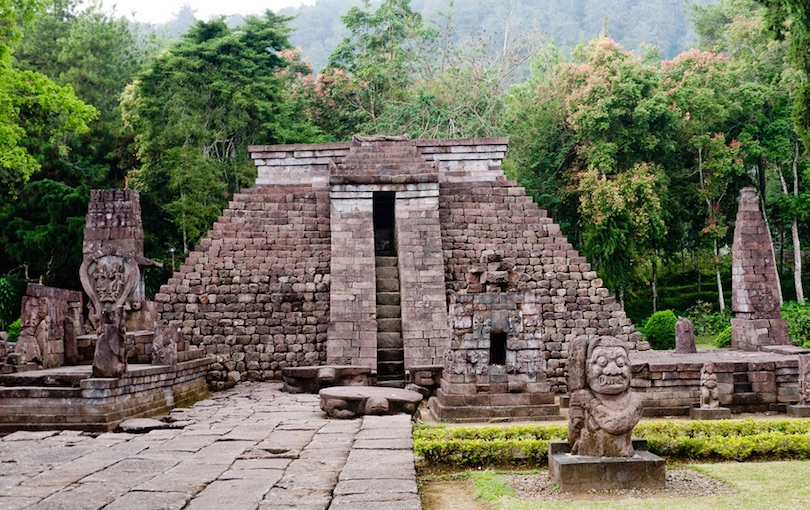 flickr/Marina & Enrique
flickr/Marina & Enrique
Candi Sukuh is a 15th century Hindu temple that is located on the western slope of Mount Lawu in Central Java, Indonesia. The site has a step pyramid as its main monument, surrounded by life-sized figures. The temple of Candi Sukuh differs completely from other Javanese Hindu and Buddhist temples and is curiously Maya-like. Candi Sukuh contains a pervasive theme of spiritual liberation symbolized by reliefs and statues. The temple isn’t as wildly erotic as is sometimes suggested but the elements of a fertility cult are quit clear.
13. Tomb of the General
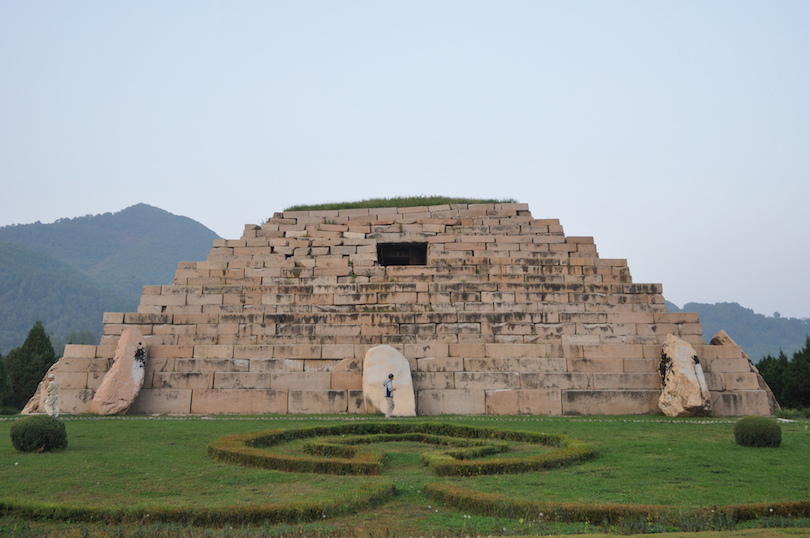 flickr/auws
flickr/auws
The Tomb of the General is the burial tomb of King Jangsu, the 20th monarch of Goguryeo, the northernmost of the Three Kingdoms of Korea. King Jangsu became king at the age of 19 in 413 AD and reigned over Goguryeo until his death in 491 AD. During his reign, Goguryeo was at its golden age, stretching from Mongolia to Chungju. Known as the Pyramid of the East, his tomb measures 31 meters (102 ft) on each side and stands 13 meters (43 ft) high. The step pyramid is located in Ji’an in China, a former capital of Goguryeo.
12. Monte Alban
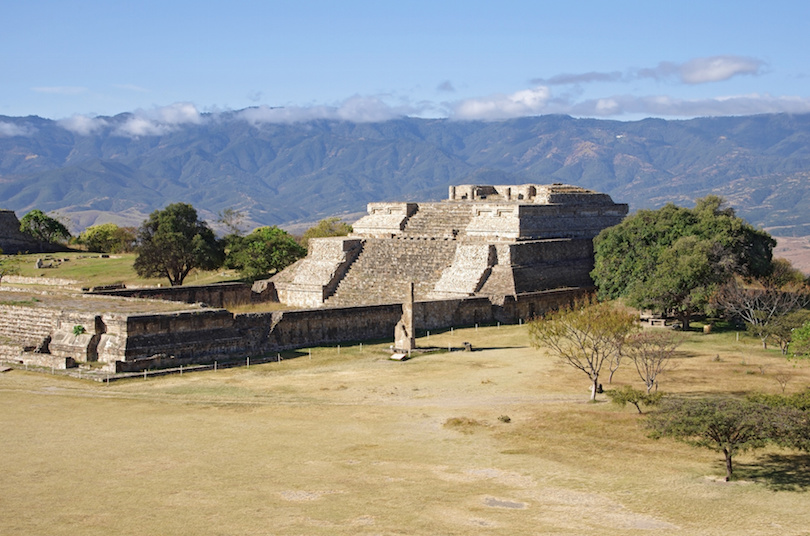
Monte Alban is a large and very old ceremonial center located on a hilltop in the center of the Valley of Oaxaca in southern Mexico, about 9 kilometers (6 miles) west of the modern city of Oaxaca. The civic-ceremonial center of the Monte Albán rises some 400 meters (1,300 ft) from the valley floor. Monte Alban consists of a broad, flat hilltop terrace, the Gran Plaza, that runs north to south. Two large pyramid mounds terminate the great plaza at the ends, and the sides of the space are lined with stepped platforms and terraces, built of large stone blocks.
11. El Tajin
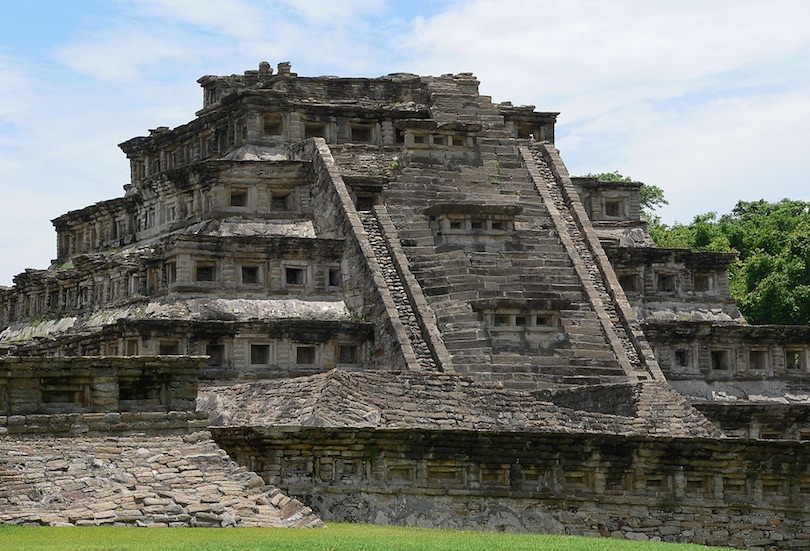 wikipedia/Frank C. Müller
wikipedia/Frank C. Müller
El Tajín was an important gulf coast city in present-day Mexico, founded by the Classic Veracruz culture. Most of the buildings at the site were constructed between 600 – 900 AD. El Tajin’s most famous building is the Pyramid of the Niches. The pyramid’s design is unique in the Americas and rises 20 meters (66 ft) on seven layers, with a wide staircase at its eastern side.
10. Caracol
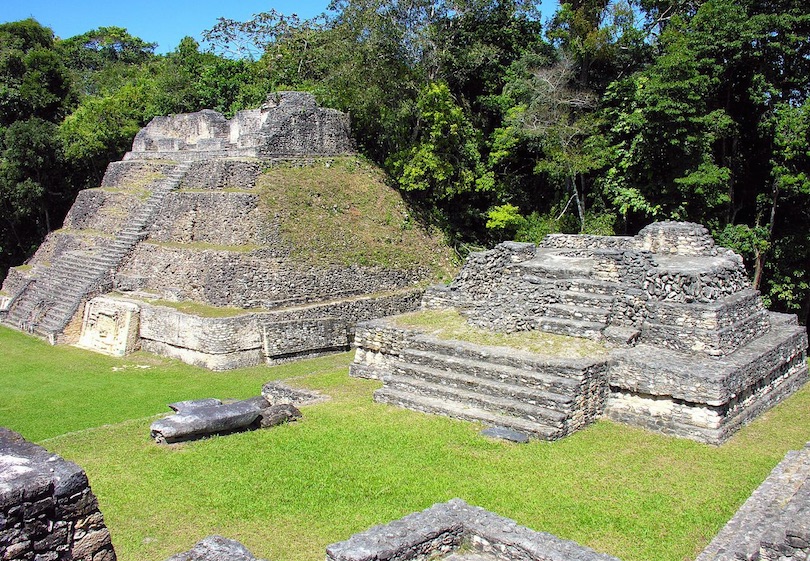 flickr/Dennis Jarvis
flickr/Dennis Jarvis
Siting high on the Vaca Plateau, 500 meters (1650 ft) above sea level, Caracol is the largest Maya site in Belize. It was once one of the largest ancient Maya cities, covering some 168 square kilometers (65 mi²). At it’s peak around 650 AD it had an estimated population of about 150,000, more than twice as many people as Belize City has today. The largest pyramid in Caracol is Canaa (Sky Place), at 43 meters (143 ft) it is still the tallest man-made structure in all of Belize.
9. Great Ziggurat of Ur
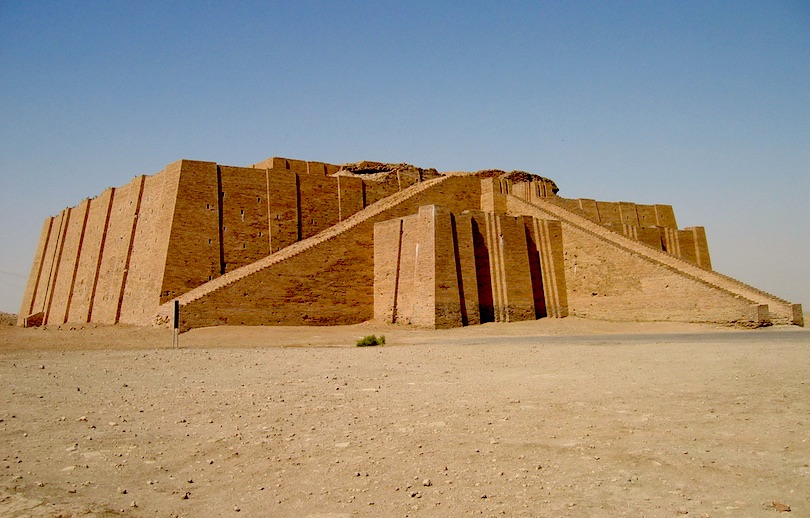 flickr/Joshua McFall
flickr/Joshua McFall
The Ziggurat of Ur, a massive step pyramid about 64 by 46 meters (210×150 ft) in size in modern-day Iraq, is the most well-preserved monument from the remote age of the Sumerians. The ziggurat was part of a temple complex that served as an administrative center for the ancient city of Ur. Construction of the ziggurat was completed in the 21st century BC by King Shulgi, who in order to win the allegiance of the many independent cities, proclaimed himself a god. The step pyramid was reconstructed in the 6th BC by King Nabonidus and once more in the 20th century by Saddam Hussein with bricks stamped with his name.
8. Calakmul
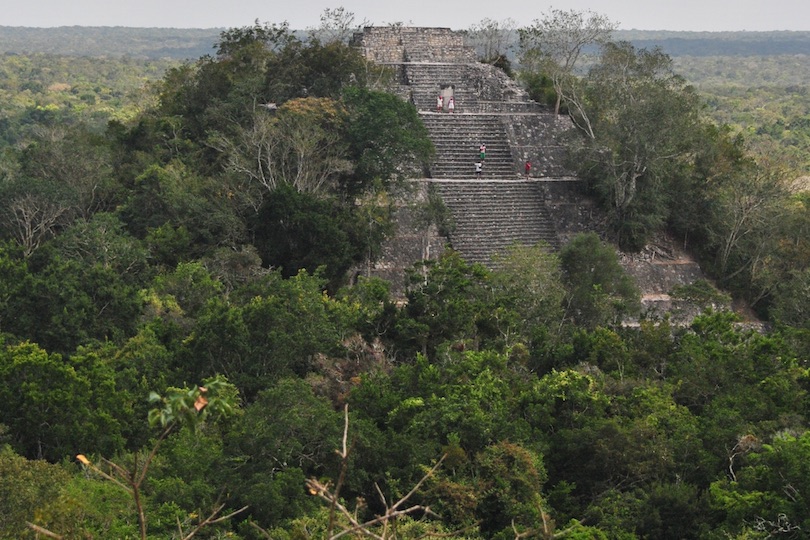 flickr/Ed Clayton
flickr/Ed Clayton
Calakmul is a Mayan site hidden inside the jungles of the Mexican state of Campeche. It is one of the largest Mayan cities ever uncovered with over 6,500 ancient structures identified. Calakmul’s 55 meter high pyramid is by far the largest structure at the site. Like many other temples in Mesoamerica the Mayans increased the size of the pyramid at Calakmul by building upon an older existing temple to reach its current size.
7. Chogha Zanbil
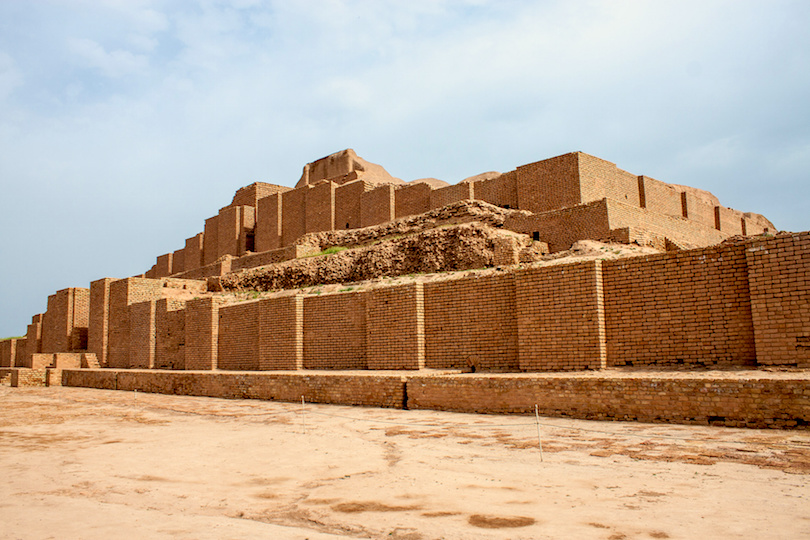
The Chogha Zanbil in Iran was built by the Elamites around 1250 BC by the king Untash-Napirisha to honor the god Inshushinak. The ziggurat may appear as a series of platforms built on top of each other, but the temple is actually composed of five towers of different heights. While most of the ziggurats where destroyed by natural calamities and war, the Chogha Zanbil ziggurat is relatively well preserved.
6. Palenque
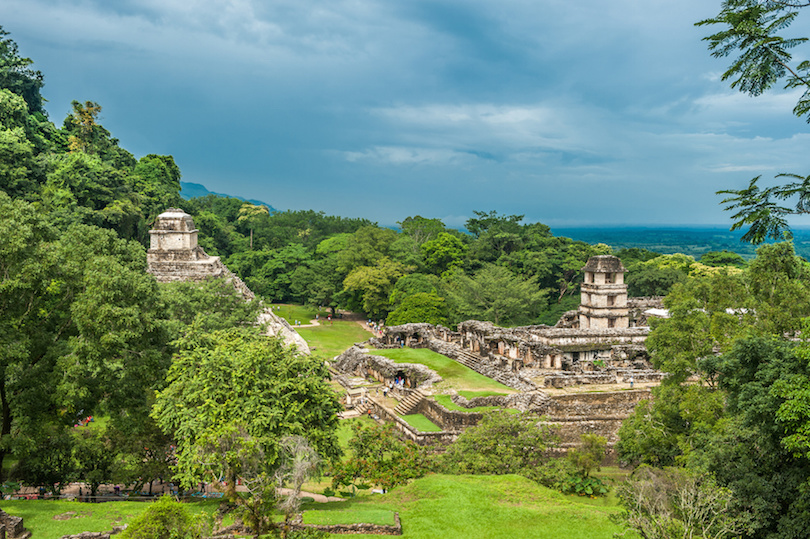
Palenque is an archaeological site that was located on the western edge of the Maya empire in the present-day state of Chiapas, Mexico. Most structures in Palenque date from about 600 AD to 800 AD including the Temple of Inscriptions, the only Mesoamerican pyramid built as a funerary monument.
5. Uxmal
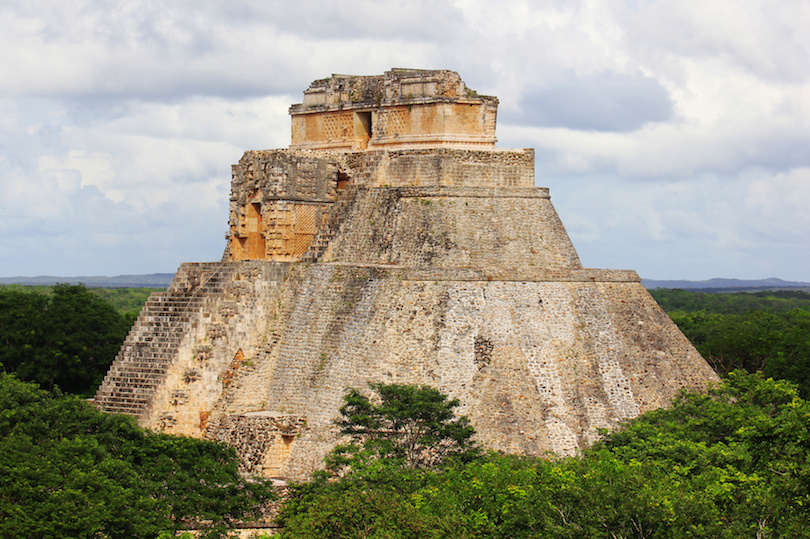
Uxmal, meaning “built three times” in the Mayan language, is one of the best preserved Pre-Columbian sites in Mexico. The most recognizable and tallest structure at 115 feet is the Pyramid of the Magician. The layers of this step pyramid are oval unlike the rectangular or square layers of other Mayan pyramids. The pyramid appears to have been built in five phases, starting from the sixth century continuing periodically through the 10th century.
4. Step Pyramid of Djoser
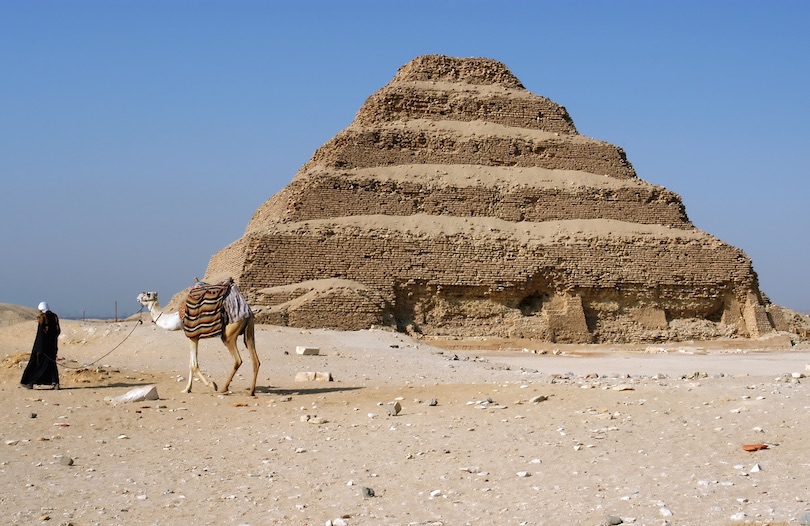
The Step Pyramid of Djoser at the Saqqara necropolis was the very first pyramid built by the ancient Egyptians. It was constructed during the 27th century BC for the burial of Pharaoh Djoser by his Vizier Imhotep. The structure began as a traditional, flat-roofed mastaba but by the end of Djoser’s reign it had risen to a six stepped layer Pyramid and stood 204 feet (62 meters) high. As in earlier mastaba tombs, the burial chambers of the Step Pyramid are underground, hidden in a maze of tunnels.
3. Tikal
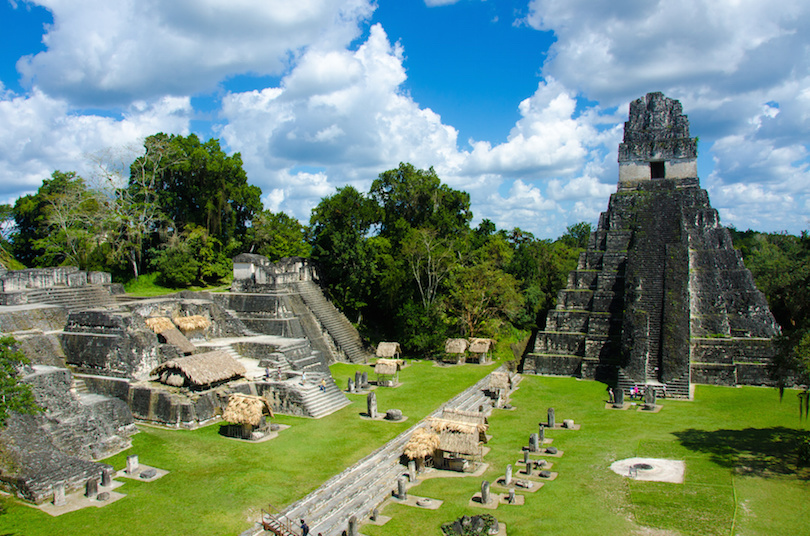
Situated in the lowland rainforest of northern Guatemala, Tikal is perhaps the most breathtaking of all the Mayan sites. Restored buildings are scattered around the area while many more ruined buildings are still hidden by the jungle. Between ca. 200 to 900 AD, Tikal was the largest Mayan city with an estimated population between 100,000 and 200,000 inhabitants. Tikal contains six very large step pyramids. The largest, Temple-pyramid IV, is some 72 meters (230 feet) high and was finished around 720 AD. Climbing to the top of one of these pyramids offers a great experience with beautiful panoramic views from above the tree tops.
2. Chichen Itza
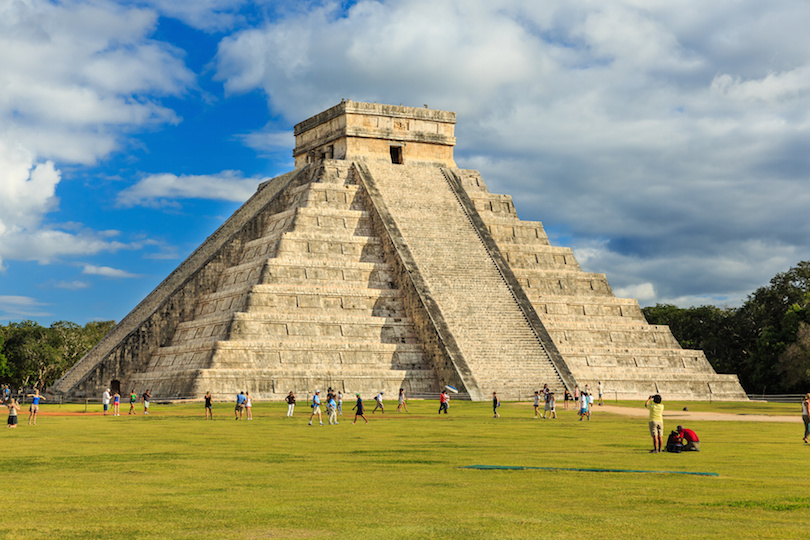
El Castillo is the nickname of one of the most spectacular Mayan temples that dominates the archaeological site of Chichen Itza, in the Yucatán state of present-day Mexico. The design of the step pyramid has special astronomical significance. Each face of the pyramid has a stairway with 91 steps, which together with the shared step at the top, add up to 365, the number of days in a year. Climbing El Castillo is no longer allowed after a woman fell to her death in 2006.
1. Teotihuacan
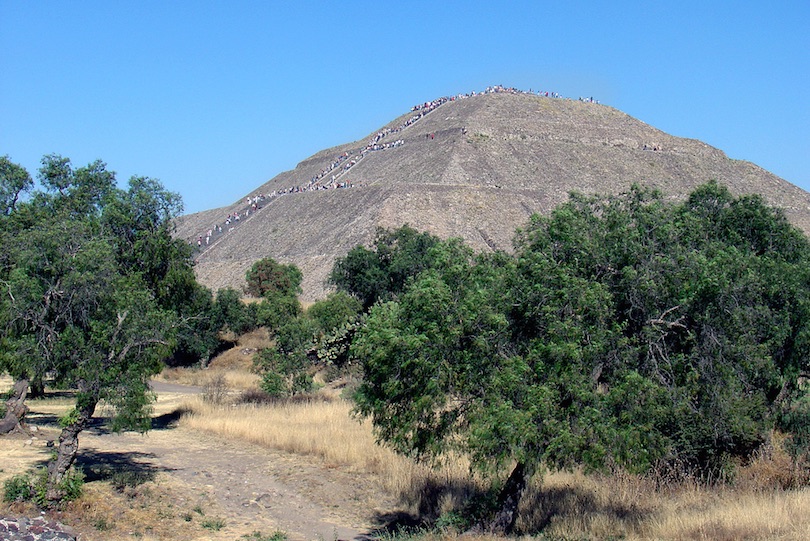 flickr/ZeroOne
flickr/ZeroOne
In the 2nd century BC a new civilization arose in the valley of Mexico. This civilization built the flourishing metropolis of Teotihuacán and it’s huge step pyramids. The Pyramid of the Sun was built around 100 AD and is 246 feet (75 meters) high making it the largest building in Teotihuacán and one of the largest in Mesoamerica. The construction of the smaller Pyramid of the Moon started a century later and was finished in 450 A.D. Seven centuries after the demise of the Teotihuacán empire the pyramids were honored and utilized by the Aztecs and became a place of pilgrimage.